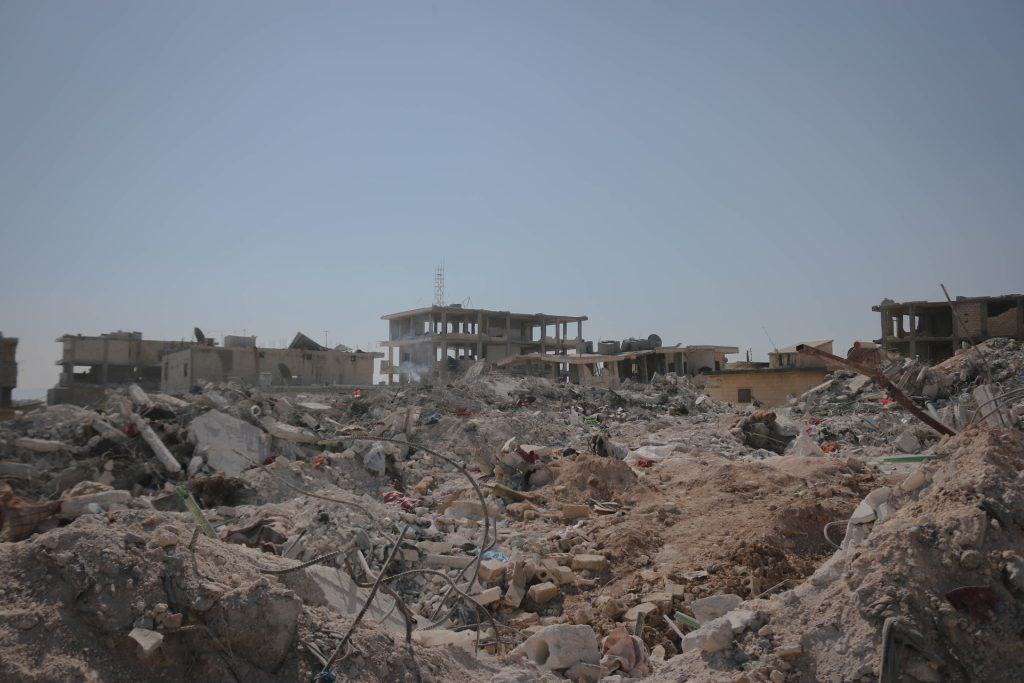
Satellite Revolution: Morocco’s Earthquake Epicenter Mapped From Space
In the wake of the devastating 6.8 magnitude earthquake that rocked Morocco, space technology is offering unprecedented insight into the epicenter of this natural disaster. Rapid mapping via satellites has transformed the way responders assess and address the aftermath, especially in the hard-hit High Atlas mountains.
Eye in the Sky: Sentinel’s Game-Changing Reconnaissance The European Union’s Sentinel-1a satellite has been pivotal in this endeavor. At approximately 06:30 GMT on Monday, the satellite, orbiting 700km (435 miles) above the Earth, scanned the Moroccan landscape. Unlike conventional satellites, Sentinel boasts a radar instrument that senses ground shifts in all weather conditions, both day and night.
Its scans revealed alarming changes in the Earth’s elevation. Blue colorations on the satellite’s maps indicated an upward movement of the ground, seen as a distance reduction between the satellite and the Earth’s surface. Contrarily, yellow and orange hues marked where the ground had sunk since Sentinel’s last measurement.
The results were startling. The most significant ascent towards the satellite was up to 15cm (6in), while the maximum descent was approximately 10cm (4in). Considering Sentinel’s angular view of the Earth, the actual vertical shifts would be even more pronounced.
Interferometry: The New Age Seismic Tool Interferometry, a technique comparing ‘before’ and ‘after’ views, provided this granular data. Prof. Tim Wright from Leeds University elucidated the technique’s findings, stating, “The fault plane dips away to the north from the gap between the blue and yellow patches on the map.” This evidence confirmed a north-dipping buried thrust fault as the quake’s cause.
In layman’s terms, while the fault’s rupture didn’t pierce through the upper rock layers, its directional faulting implied that if an object were on the rupture, it would gravitate northward.
Such analysis is paramount for two reasons:
- Understanding the Earthquake: The analysis illuminates the quake’s nature and helps gauge future hazard risks, especially in areas like this that haven’t witnessed a significant quake in ages.
- Evolution of Geological Analysis: Until recently, such in-depth analysis required geologists to physically inspect the affected areas. Recalling the 1980 El Asnam earthquake in Algeria, Prof. Wright mentioned the intense fieldwork needed to identify the quake’s buried thrust fault system. But today, institutions like the UK Centre for Observation and Modelling of Earthquakes, Volcanoes, and Tectonics (Comet) can produce these interferometric maps within mere hours of a Sentinel pass.
The Future of Earth Observation Last Thursday marked the UK’s return to the EU’s Copernicus Earth observation system, heralding a new era for British scientists in satellite development akin to Sentinel-1.
The Morocco earthquake and its subsequent satellite mapping signal a transformation in natural disaster management. The synergy of space technology and ground operations, accelerated by international collaborations, is redefining how humanity responds to the unpredictable wrath of nature
©eco-guardians.org